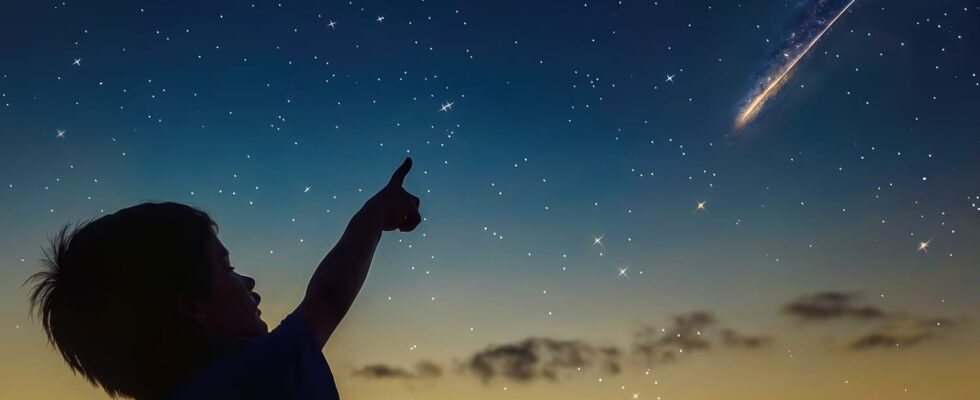To make sure you don’t miss any of the shooting stars of summer, put all the chances on your side by marking these dates in your calendar.
Every summer, they return and amaze us. It is the most beautiful celestial spectacle of the year, and not the least. Shooting stars, these swarms of cosmic dust entering the Earth’s atmosphere at more than 210,000 km/h and transforming into a brilliant luminous trail when they disintegrate, light up the night sky of the northern hemisphere…
Up to 200 meteors per hour can be observed with the naked eye, the Perseids, left by comet 109P Swift Tuttle, will be there this August, giving rise to a most marvelous celestial ballet. Mark your calendars for these key dates that correspond to their peak activity: on the nights of Saturday 10 to Wednesday 14 August 2024. The good news is that the weather conditions will be favourable for observing them at this time of year.

Indeed, the Moon will set early, before midnight, leaving a dark sky conducive to their observation, provided that the sky is not overcast. Obviously, you will have to stay away from lights to observe them. Even if big cities are not the most conducive places to observe them, know however that “in a really dark courtyard in Paris, you can see quite a few things, even if the sky background is bad”, assured Olivier Las Vergnas, president of the French Astronomy Association (AFA), to Le Parisien.
To observe them, turn around to the northeast and observe a large portion of the sky, all around the constellation of Perseus, making sure that the latter is not hidden by a house roof or anything else. Make yourself comfortable on a chair, an armchair or lie down on a mattress (with a little wool), because yes, you will have to be patient: a shooting star cannot be observed in the sky in just a few minutes! The Perseids will not be the only celestial spectacle to observe these summer evenings: the Andromeda galaxy, the stars of the summer triangle as well as the Milky Way will be visible to the naked eye! Use the SkyView or Stellarium applications to help you spot them. Ready to make a wish?
